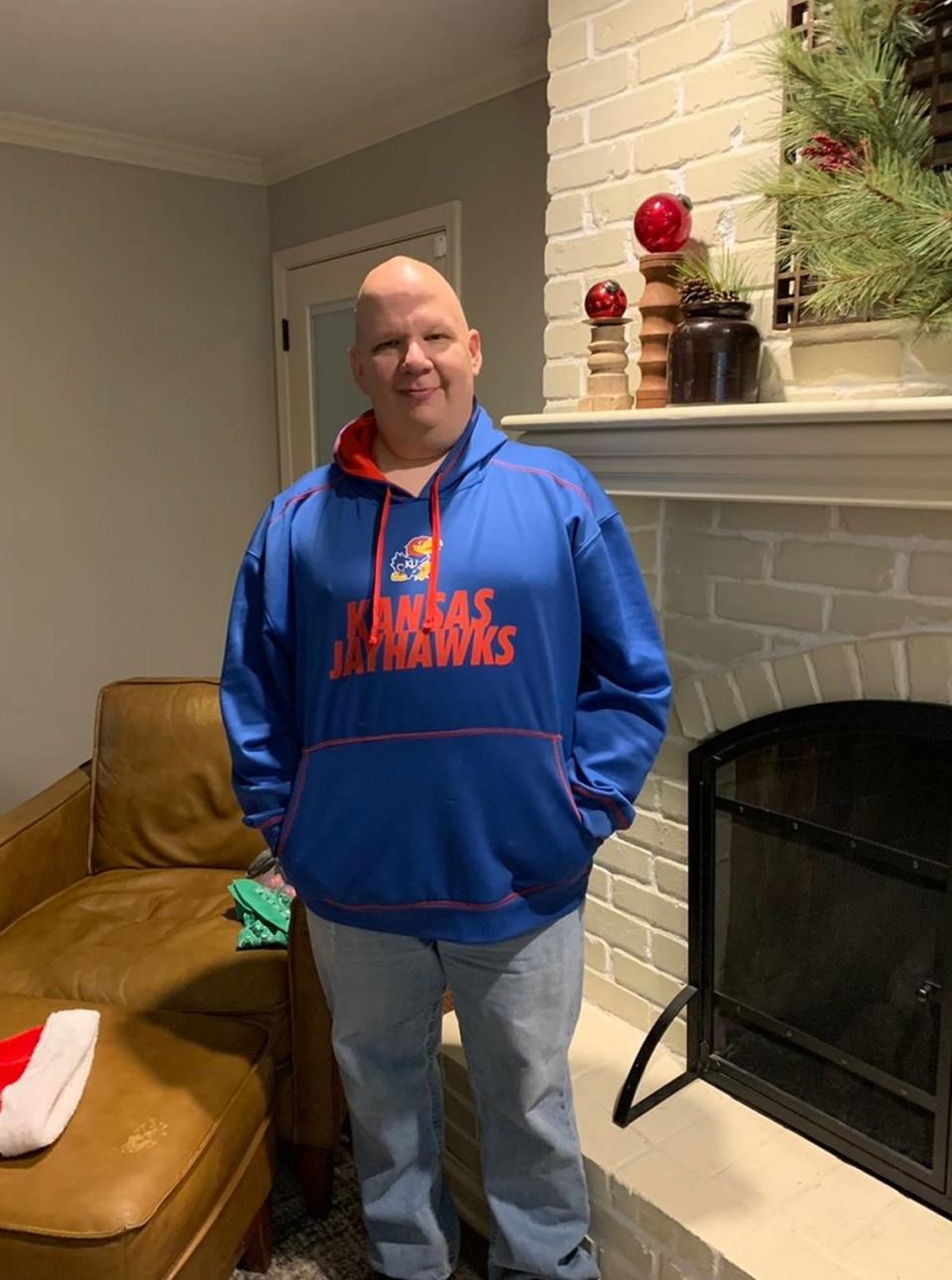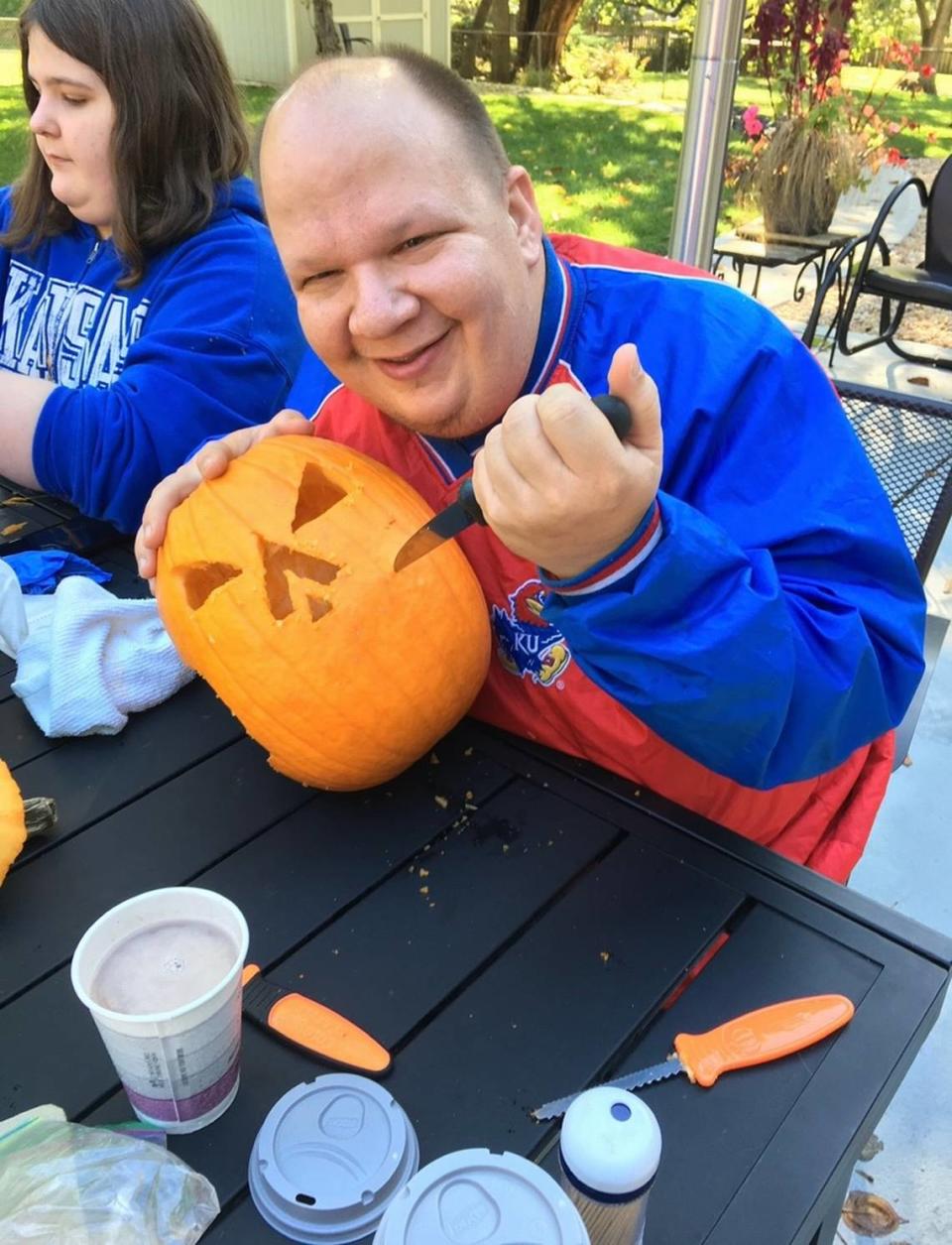Kansas cyclist had gotten new job before fatal crash: ‘He was flying, he was so excited’
When Noah Anderson rode his bike around the metro area, he took every safety precaution he could.
He wore a helmet and reflective gear and had lights on his bicycle, but it wasn’t enough to save his life, his mother Sue Anderson said.
Anderson, 40, was riding his bike with a friend on July 30, when strong storms hit the metro. They took cover under an overpass, and later couldn’t take their usual route home because of branches that had fallen on the roadway.
On their way back, Anderson’s friend rode on the sidewalk, while he chose the street since it would be smoother.
His mother believes the driver who hit her son near 99th Street and Antioch Road that night didn’t see him coming up a hill until the last second, when the car tried to swerve but still hit the back of his bike.
Officials told Sue Anderson that her son hit the car’s passenger side bumper and grille, rolled over the hood and smashed the windshield before the impact threw him about 40 feet. At some point, his helmet flew off.
Her son didn’t have a pulse at the scene, but emergency medical crews resuscitated him and brought him to a hospital.
Doctors at the Overland Park Trauma Center told her family Anderson had brain and spine damage as well as an internal decapitation, when the spine separates from the base of the skull. They told the family he had no chance of life.
Family members said their goodbyes, hospital staff put together an honor walk and Anderson passed in the early evening of Aug. 1.
But because Anderson had been resuscitated, Sue Anderson has tried to focus on the one bright spot amid her pain — her son was able to become an organ and tissue donor. His kidneys have already been donated to a patient in need. As a retired nephrologist, Sue Anderson said she knows what patients on dialysis go through and what it must’ve meant to receive new kidneys.
“It was a mixed blessing,” she said.

A ‘miracle kid’
Sue Anderson adopted her son – the second of her four adopted children – from Jackson County when he was about four months old.
Noah Anderson was the family’s “miracle kid.” Born with an abnormal skull, he needed an operation when he was two months old. His foster family cared for him through the tough surgery and his recovery before the Andersons welcomed him into their family.
When he was 19, Anderson had another life-threatening experience. His mom and sisters rushed to a hospital after he nearly drowned in a Prairie Village pool while trying to see how long he could hold his breath.
Firefighters who knew Anderson from his job at Hy-Vee were outside the hospital room crying as the family arrived.
A police officer who knew CPR happened to be at the pool that day, and jumped in and saved his life. Still, Anderson stayed in the hospital a few days hooked up to a ventilator. His mom was shocked that he didn’t have a brain injury from the incident.
Her son was loving and kind. He talked often and told detailed stories.
In July, the family held a “Chreaster” party. It was the first time they’d all seen each other since before the pandemic, and they wanted to commemorate all of the Christmases, Easters and other milestones they’d missed.
Everyone said they missed Anderson’s famous hugs.
“That’s just something our family is going to have to miss for the rest of our lives,” Sue Anderson said.
At the time of his death, Anderson was divorced, his mom said, with a daughter and stepson. He and his ex-wife had been building a friendship and working on parenting together, his mom said.
Growing up, he fell in love with the outdoors in Boy Scouts, and eventually earned the rank of Eagle Scout. As an adult, he biked 40 miles at a time, camped and explored.
He went on walks around the neighborhood often, but always called them hikes. Calling it a walk, he told his mother, made it seem like his purpose was to exercise, when really he just wanted to enjoy his time outside.
“I think he found his spirituality in nature,” Sue Anderson said.
After graduating from Shawnee Mission East High School, Anderson earned a certificate in facility management and construction at a technical school in Kansas City, Kansas.
The construction side wasn’t his forte — Anderson was afraid of heights — but he worked maintenance jobs at apartment complexes and other facilities.
A day before the crash, he was accepted for his dream job working in maintenance for the U.S. Postal Service.
“He was flying, he was so excited,” Sue Anderson said. “He biked all the time. I don’t think it was a celebratory bike ride, but I’m sure he was very, very happy that day because of that job offer and being with his best friend.”
Some family members have talked with BikeWalkKC about finding ways to honor Noah Anderson. Michael Kelley, the organization’s policy director, said they’ve considered placing a ghost bike rack — a bike rack painted white — or signage at or near the scene of the crash to draw attention to it.

Dangers for cyclists
Sue Anderson doesn’t blame anyone for the incident. She said the person who hit her son asked for permission to write the family a letter. Like her family, the driver’s life has also been changed forever by the incident, Anderson said.
If anything, more protections need to be put in place for cyclists who ride on streets, she said.
Kelley said Overland Park, like other suburban parts of the metro area, has safe bike trail systems, but lacks on-road paths that are also protected.
Overland Park has also expanded a network of painted bike lanes in the last few years, Kelley said, but those lanes only serve more experienced and adventurous cyclists who aren’t afraid to mix with motor vehicle traffic.
Instead, Kelley said cities should invest in protected bike lanes and expanded trails so that all cyclists can get around while being safe. Projects like North Kansas City’s Armour Road Complete Street, which includes low concrete walls to protect bike lanes, provide a better way to keep cyclists of all abilities safe, he said.
“People want to be safe, and they deserve to be safe,” he said. “Sometimes we put too much of an emphasis on were they wearing a helmet or were they wearing bright clothing, when the research tells us that the facilities that they’re riding on are much more important in terms of determining a safe outcome.”
Since the crash, two neighbors have told Sue Anderson their own stories of issues while they were biking.
One said he used to ride about 40 miles a week before the pandemic, but he was sideswiped twice by cars. Another neighbor said it was dangerous, even though she used to cycle with groups.
“It just takes my breath away,” Sue Anderson said, “what kind of dangers cyclists are having when they’re on the streets.”

